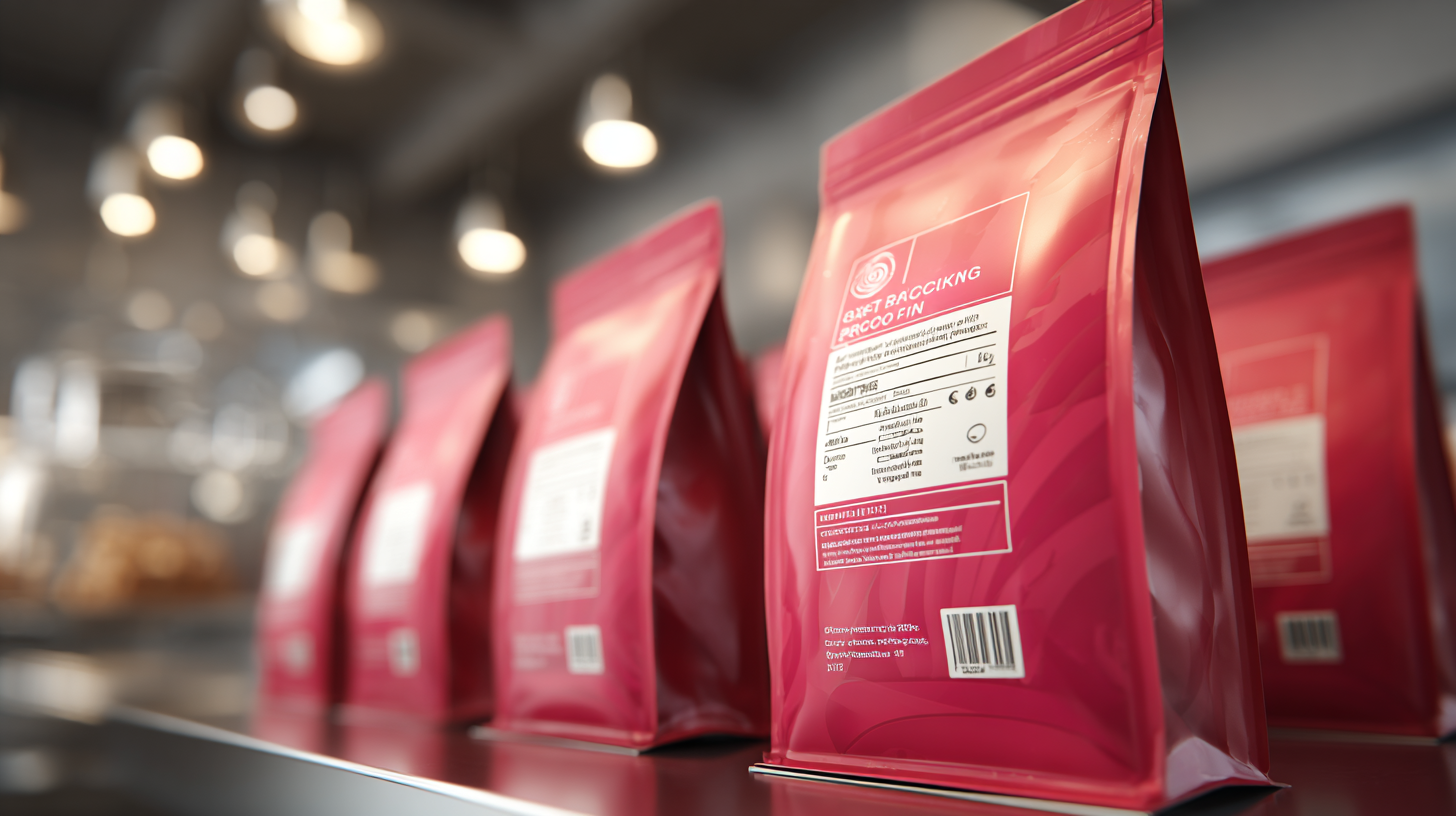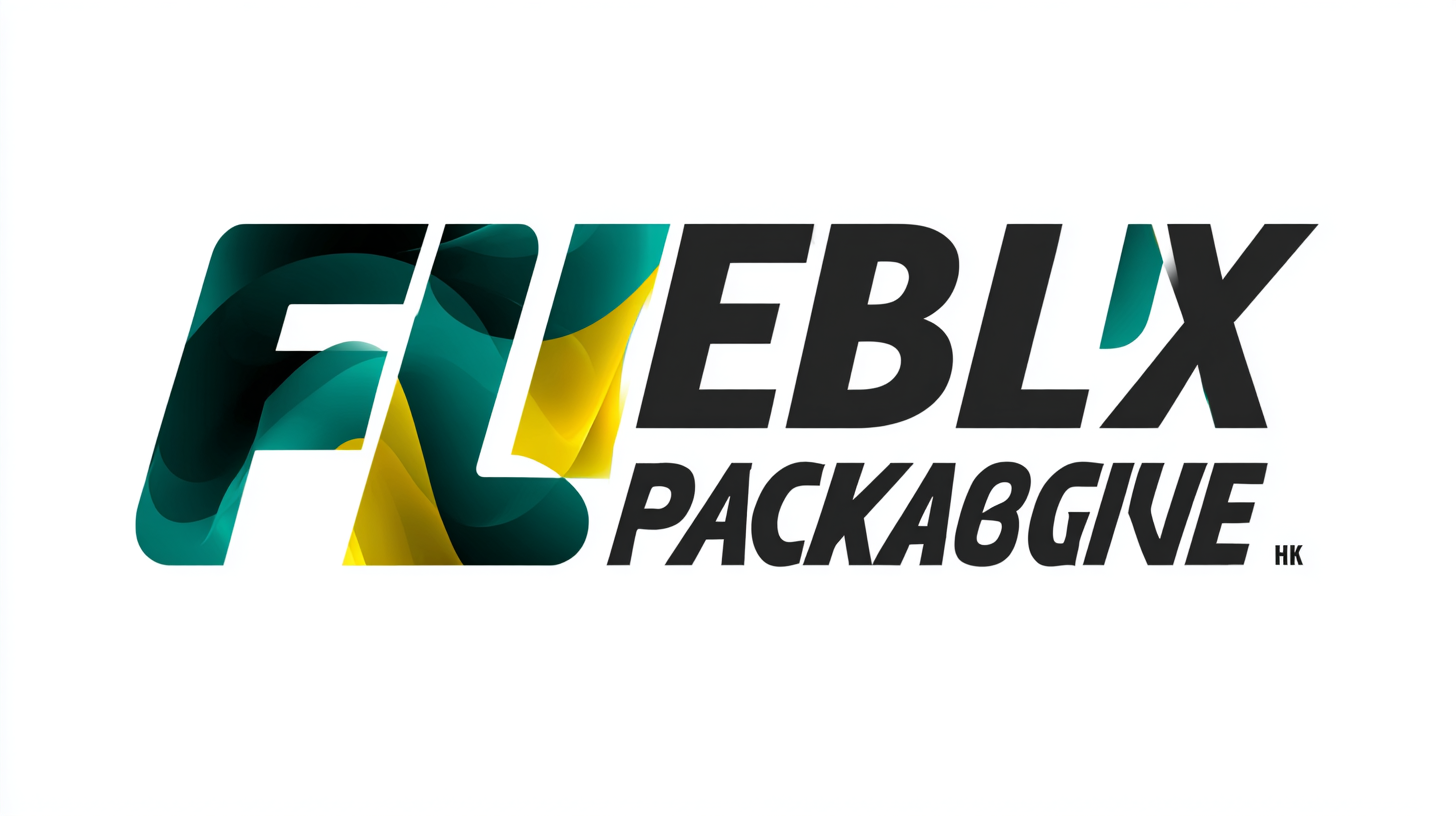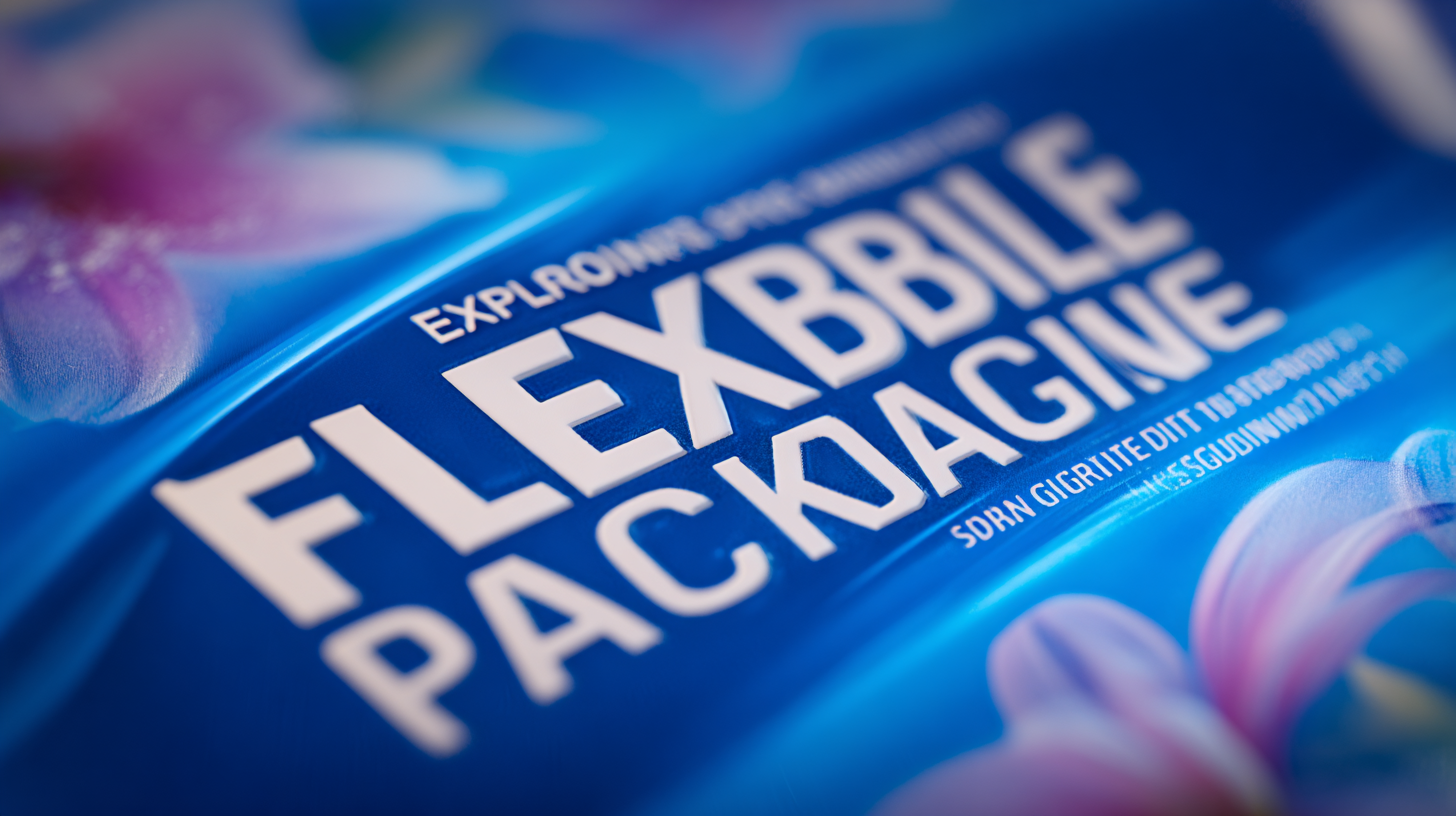Exploring the Best Flexible Packaging Specifications with a Step by Step Guide
In today's fast-paced market, the demand for flexible packaging solutions is rapidly increasing as businesses seek innovative ways to enhance product protection and shelf appeal. Flexible packaging not only provides a versatile and lightweight alternative to traditional rigid containers, but it also offers opportunities for brand differentiation and sustainability. This blog explores the best flexible packaging specifications, providing a comprehensive step-by-step guide to understanding the crucial standards that govern the industry. By delving into various materials, design options, and regulatory requirements, we aim to equip manufacturers and brand owners with the knowledge necessary to make informed decisions that align with their operational goals and consumer expectations. Join us as we navigate the intricate landscape of flexible packaging specifications to uncover the key elements that can elevate your packaging strategy.

Understanding Flexible Packaging: Key Specifications and Types
 Flexible packaging has become one of the fastest-growing segments in the packaging industry, with a market value expected to reach $400 billion by 2027, according to a recent report by Smithers Pira. This surge can be attributed to the cater to a variety of consumer needs, including convenience, sustainability, and shelf-life extension. Key specifications that define flexible packaging include barrier properties, seal strength, and durability, which can vary significantly depending on the type of product being packaged. Common types of flexible packaging include pouches, bags, and wraps, each tailored for specific applications, from food to pharmaceuticals.
Flexible packaging has become one of the fastest-growing segments in the packaging industry, with a market value expected to reach $400 billion by 2027, according to a recent report by Smithers Pira. This surge can be attributed to the cater to a variety of consumer needs, including convenience, sustainability, and shelf-life extension. Key specifications that define flexible packaging include barrier properties, seal strength, and durability, which can vary significantly depending on the type of product being packaged. Common types of flexible packaging include pouches, bags, and wraps, each tailored for specific applications, from food to pharmaceuticals.
When selecting the right flexible packaging solution, it's essential to consider the material composition. For instance, polyethylene (PE) and polypropylene (PP) are popular choices due to their excellent moisture and oxygen barrier properties. Additionally, using biodegradable materials can enhance sustainability efforts.
Tips: Always conduct thorough testing for seal integrity to prevent product spoilage. It's also beneficial to stay updated on regulatory requirements, as the packaging landscape is continually evolving. Finally, consider investing in advanced printing technologies to enhance brand visibility and consumer attraction.
Essential Materials for Flexible Packaging and Their Properties
When considering flexible packaging, understanding the essential materials and their properties is crucial for achieving optimal results. Key materials include polyethylene (PE), polypropylene (PP), and polyvinyl chloride (PVC).
PE is widely favored for its moisture resistance and sealability, making it ideal for food applications. PP, on the other hand, offers excellent clarity and strength, making it suitable for products like candy wrappers and labels. PVC provides outstanding rigidity and is often used in packaging for industrial goods.
Tips: Always assess the specific requirements of your product to choose the right material. For instance, if your product needs extended shelf life, prioritize materials that offer superior barrier properties against moisture and oxygen. Additionally, consider the environmental impact; recyclable and biodegradable materials are gradually gaining popularity and can enhance brand reputation.
Another critical aspect is the film thickness, which influences both durability and cost. Thicker films offer better protection but can increase overall packaging expenses. A balance must be struck between protection and cost efficiency. Also, keep an eye on advancements in flexible packaging technologies, as they may introduce innovative materials that meet sustainability goals without compromising performance.
Step-by-Step Guide to Selecting the Right Flexible Packaging Solution
When selecting the right flexible packaging solution, it’s essential to consider several key factors that can impact both the functionality and sustainability of your product. According to a recent Smithers report, the flexible packaging market is projected to grow at a compound annual growth rate (CAGR) of 4.4% to reach USD 248 billion by 2024. This growth is driven by increasing consumer demand for eco-friendly and convenient packaging options. Therefore, manufacturers should prioritize materials that not only preserve product freshness but are also recyclable or biodegradable.
Tip: Always assess your product’s shelf life and transportation needs when choosing flexible packaging. For example, products needing extended freshness might benefit from multi-layer films that provide excellent barrier properties, ensuring minimal spoilage.
Another crucial aspect is understanding the regulatory requirements in your industry. Food and beverage industries, for instance, must adhere to strict safety standards, which can vary by region. A study by GlobalData revealed that 59% of consumers are now more likely to choose brands that are transparent about their packaging materials. This means selecting packaging that complies with safety regulations while also appealing to environmentally-conscious customers.
Tip: Engage with suppliers who can provide comprehensive details about their materials’ sustainability and compliance with industry standards. This proactive approach not only enhances your product's credibility but also aligns with evolving consumer preferences.
Common Challenges in Flexible Packaging and How to Overcome Them
When it comes to flexible packaging, businesses often face a range of common challenges that can hinder their success. One primary concern is ensuring product quality while utilizing flexible materials. For example, maintaining an airtight seal is vital to prevent spoilage and contamination. To overcome this challenge, consider investing in high-quality sealing equipment and conducting regular maintenance checks. Proper training for staff on handling and sealing techniques can also significantly contribute to minimizing errors.
Another frequent issue is navigating regulations and compliance requirements, which can vary across different regions and products. Staying updated on these regulations is crucial for maintaining legal compliance and avoiding costly fines. One effective tip is to establish a dedicated compliance team that regularly reviews industry guidelines and updates. Encourage open communication channels between your packaging and regulatory teams to ensure everyone is aligned on standards.
Additionally, flexibility in design and printing can present its own set of hurdles. Businesses often struggle to adapt their packaging designs to meet market demands while ensuring cost-effectiveness. To tackle this, consider collaborating closely with packaging designers and suppliers. Utilizing digital printing technologies can provide you with the versatility needed to make quick adaptations without high costs, allowing you to respond swiftly to market changes.
Exploring Common Challenges in Flexible Packaging
This chart illustrates the common challenges faced in flexible packaging and their respective impact levels.
Future Trends in Flexible Packaging: Innovations to Watch Out For
The flexible packaging market is witnessing significant growth, driven by evolving consumer preferences and advancements in technology. As we look toward the future, several innovations in flexible packaging loom on the horizon. One of the most noteworthy trends is the increasing emphasis on sustainability. With stricter environmental regulations and a shift in consumer demand for eco-friendly products, companies are exploring new materials and recycling options that minimize environmental impact while maintaining product integrity.

Additionally, technological advancements are playing a crucial role in the evolution of flexible packaging. Innovations such as smart packaging that incorporates QR codes and NFC technology are enhancing consumer engagement and providing valuable product information. These technologies not only improve user experience but also enable brands to gather insights on consumer behavior, driving more targeted marketing strategies.
As the flexible packaging landscape evolves, businesses must stay ahead of these trends to capture market opportunities and meet the demands of a rapidly changing consumer base.

